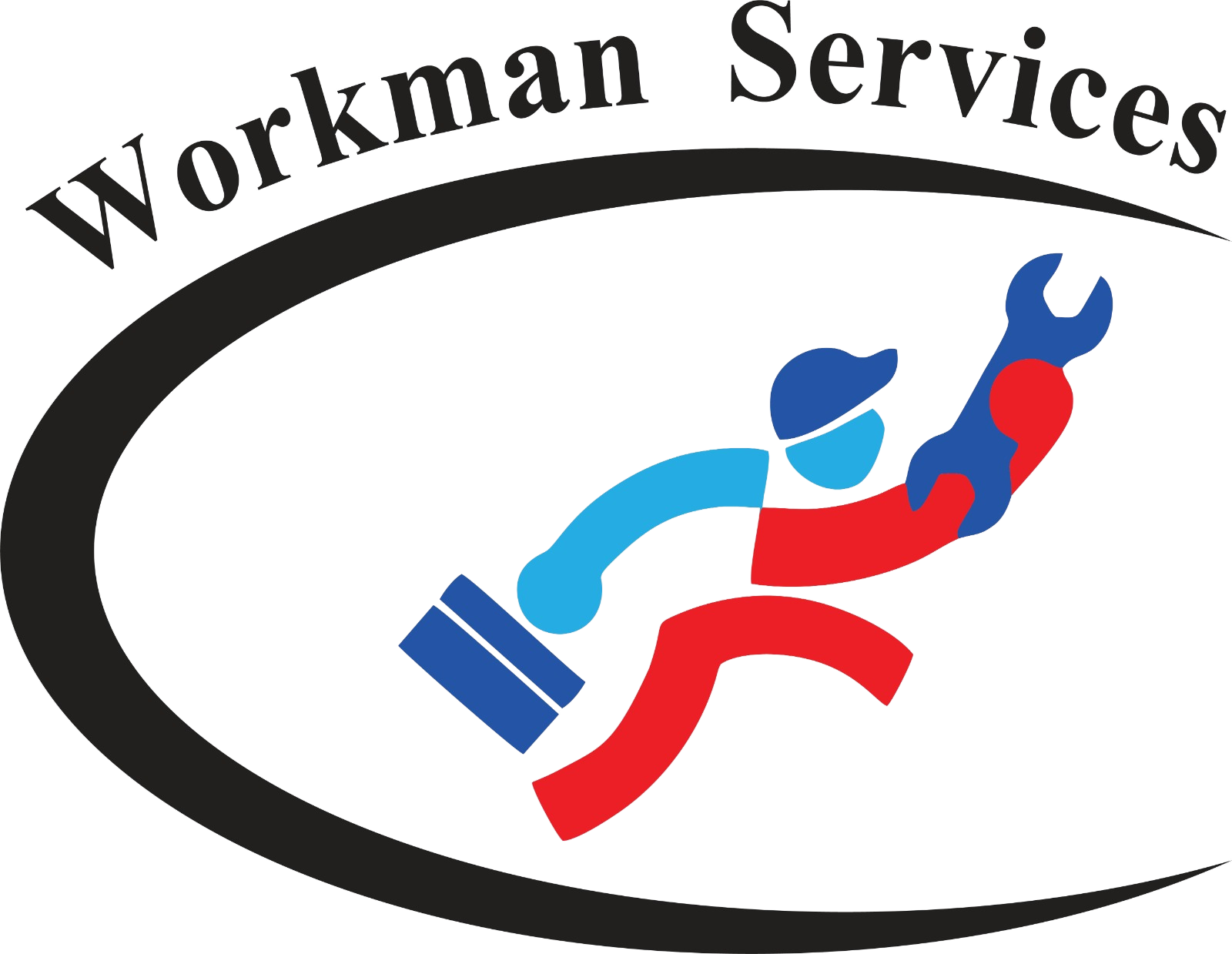The Ultimate Guide to HVAC Solution Providers in Pakistan
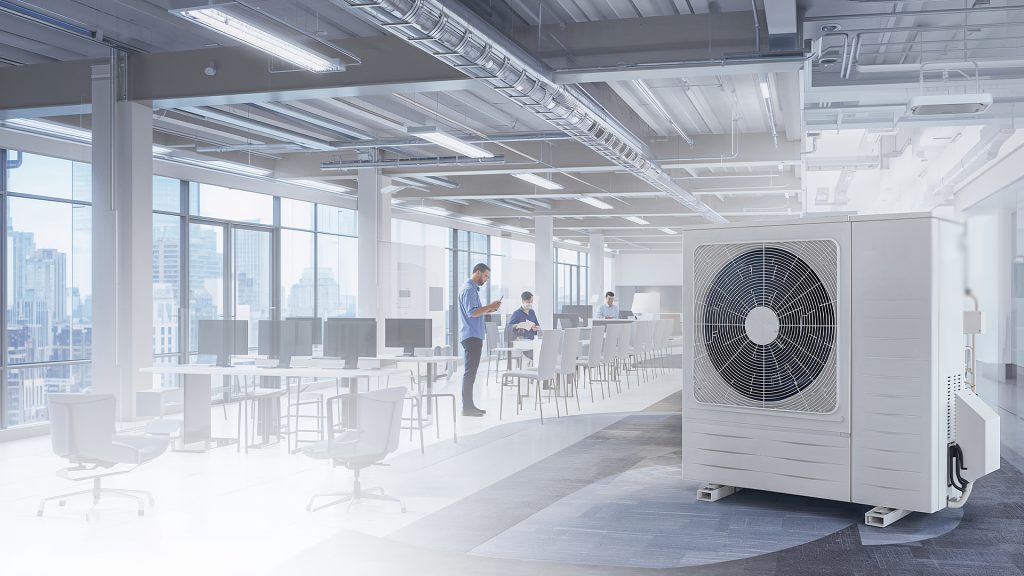
The Ultimate Guide to HVAC Solution Providers in Pakistan Finding the right partner to manage your building’s climate is crucial for success, whether you run a restaurant, manage a corporate office, or operate an industrial facility. In Pakistan’s diverse climate, an effective HVAC (Heating, Ventilation, and Air Conditioning) system is not a luxury—it’s essential for comfort, productivity, and operational efficiency. This guide will walk you through the key considerations for choosing the best HVAC solution providers in Pakistan and explore the specialized systems that meet modern commercial and industrial needs. A reliable HVAC system does more than just control temperature. It ensures clean air, manages humidity, and creates a healthy indoor environment. For businesses, this translates to happier employees, satisfied customers, and protected assets. From bustling restaurant kitchens to serene executive offices, the right climate control solution can make all the difference. Why Choosing the Right HVAC Partner Matters Selecting from the many HVAC solution providers in Pakistan can feel overwhelming, but making an informed choice is the first step toward long-term value and performance. An expert provider doesn’t just sell you a unit; they offer a comprehensive partnership that includes design, installation, maintenance, and support. A qualified partner like Workman Services brings years of industry experience, ensuring your system is designed for optimal efficiency and reliability. They help you avoid common pitfalls like oversized or undersized units, poor ductwork design, and inadequate ventilation, all of which lead to higher energy bills and frequent breakdowns. Ultimately, the right provider saves you money, minimizes downtime, and gives you peace of mind. Key Services Offered by Top HVAC Providers System Design and Consultation: Tailoring a solution that fits your specific needs. Supply and Installation: Providing quality equipment and ensuring it’s installed correctly. Testing and Commissioning: Verifying that the system operates as designed. Maintenance and Support: Offering regular servicing to prolong the life of your equipment and ensure peak performance. Specialized HVAC Solutions for Every Sector Modern businesses have unique requirements that a one-size-fits-all approach cannot meet. Leading HVAC companies offer a range of specialized systems designed for different environments. Humidity Control Systems for Food Businesses in Pakistan For restaurants, cafes, and food processing facilities, controlling humidity is as important as managing temperature. Excess moisture can lead to food spoilage, bacterial growth, and an uncomfortable dining experience. It can also cause condensation on surfaces, creating slip hazards and an unhygienic environment. This is where specialized humidity control systems for food businesses Pakistan become essential. These systems precisely regulate moisture levels, preserving the quality and safety of food products. They help prevent mold and mildew, reduce the load on refrigeration units, and create a pleasant atmosphere for both staff and customers. An experienced provider can integrate these systems seamlessly into your existing HVAC setup. HVAC Services for Restaurants in Pakistan Restaurants present a unique challenge for climate control. The heat from kitchens, fluctuating numbers of diners, and the need for proper ventilation demand a robust and responsive system. Standard air conditioners often struggle to keep up, leading to stuffy, uncomfortable dining areas. Professional HVAC services for restaurants in Pakistan focus on creating a balanced environment. This includes powerful kitchen exhaust systems to remove heat and odors, fresh air supply to maintain air quality, and zoned temperature control to keep the dining area comfortable without freezing the kitchen staff. Proper ventilation is not just about comfort; it’s a critical safety measure that reduces the risk of fire and airborne contaminants. AHU System Suppliers in Pakistan For larger spaces like hospitals, manufacturing plants, and shopping malls, Air Handling Units (AHUs) are the heart of the HVAC system. An AHU is a large-scale unit that conditions and circulates air as part of a central HVAC system. It can heat, cool, humidify, dehumidify, and filter the air before distributing it through ductwork. Finding reliable AHU system suppliers in Pakistan is key to ensuring your facility has consistent and high-quality air. A well-designed AHU system is crucial for maintaining sterile environments in hospitals, controlling air quality in industrial settings, and ensuring comfort across large commercial buildings. These systems are highly customizable to meet specific filtration and conditioning requirements. VRF System for Executive Buildings in Pakistan Modern office buildings, especially those with executive suites and varied occupancy, require a flexible and energy-efficient solution. A Variable Refrigerant Flow (VRF) system is the ideal choice. VRF systems use refrigerant to both heat and cool different zones simultaneously, offering incredible flexibility and energy savings. A VRF system for executive buildings Pakistan allows individual control over different rooms or floors. For example, a sunny boardroom can be cooled while a shaded office on the other side of the building is gently heated. This not only maximizes comfort for occupants but also significantly reduces energy consumption, as the system only delivers the precise amount of conditioning needed at any given time. Its quiet operation and compact design also make it a favorite for high-end commercial spaces. Summary of HVAC Solutions and Applications To help you navigate your options, here is a table summarizing the key HVAC solutions and their ideal applications. HVAC Solution Ideal Application Key Benefits Ducting Systems Residential, Commercial, Industrial Efficient air distribution, centralized control, improved air quality. Cassette ACs Offices, Retail Stores, Restaurants Space-saving ceiling installation, even 4-way airflow, quiet operation. VRF Systems Executive Buildings, Hotels, Hospitals Simultaneous heating & cooling, high energy efficiency, zoned control. AHUs Hospitals, Malls, Manufacturing Units Centralized air handling, superior filtration, customizable for large spaces. Chillers Industrial Facilities, Large Buildings High-capacity cooling, ideal for process cooling and large-scale comfort. Humidity Control Food Businesses, Labs, Museums Prevents spoilage & mold, protects sensitive materials, improves comfort. Finding the Best HVAC Solution Providers in Pakistan When searching for a partner, look beyond the initial price tag. Consider their experience, technical expertise, and commitment to customer service. A company like Workman Services, with over 18 years in the industry, offers the end-to-end capabilities needed to execute complex projects. They serve a wide range of sectors, from residential and commercial to
Optimizing Your Commercial Space: A Guide to HVAC Ducting in Pakistan
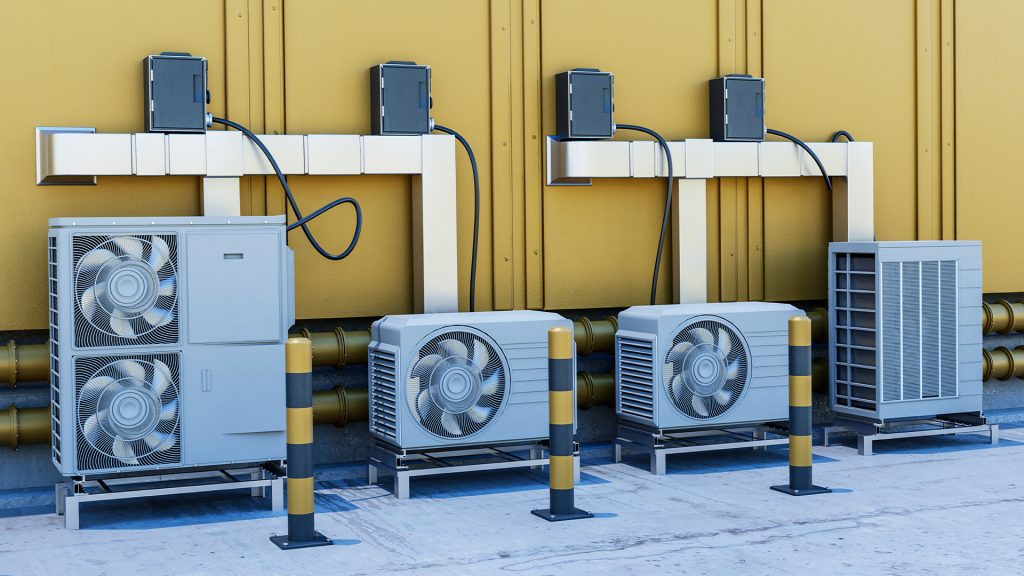
Optimizing Your Commercial Space: A Guide to HVAC Ducting in Pakistan In Pakistan’s diverse climate, maintaining a comfortable and productive indoor environment is crucial for any commercial or industrial operation. From bustling office buildings in Lahore to large-scale factories and sterile hospital environments, the effectiveness of your heating, ventilation, and air conditioning (HVAC) system is paramount. At the heart of this system lies the ductwork, an intricate network responsible for distributing conditioned air. An expertly designed commercial HVAC ducting solution in Pakistan is not just a component; it’s the backbone of your building’s operational efficiency, air quality, and occupant comfort. This comprehensive guide will explore the critical aspects of modern HVAC ducting, from design and installation to the specific needs of various sectors. We will cover why partnering with expert contractors is essential for achieving optimal performance and long-term savings. The Unseen Hero: Why Quality Ductwork Matters Ductwork is often hidden behind walls and ceilings, making it easy to overlook. However, its impact is felt everywhere. Poorly designed or installed ducting can lead to a host of problems, including inconsistent temperatures, poor air quality, high energy bills, and noisy operation. Conversely, a well-engineered system ensures that every corner of your space receives the right amount of clean, conditioned air efficiently. For businesses, this translates directly to the bottom line. A comfortable environment boosts employee productivity, enhances customer experience in retail spaces, and protects sensitive equipment in industrial settings. Investing in a high-quality commercial HVAC ducting solution in Pakistan is an investment in your operational success. Key Benefits of a Professional HVAC Ducting System: Enhanced Energy Efficiency: Properly sealed and insulated ducts prevent air leakage, reducing the load on your HVAC units and lowering energy consumption. Superior Indoor Air Quality (IAQ): A well-designed system minimizes the buildup of dust, allergens, and pollutants, creating a healthier environment for everyone inside. Consistent Comfort: Strategic duct layout eliminates hot and cold spots, ensuring uniform temperature distribution throughout the building. Reduced Operational Noise: Professional installation and the use of quality materials significantly reduce the rattling and whistling associated with substandard ductwork. Long-Term Reliability: Durable materials and expert craftsmanship mean fewer repairs and a longer lifespan for your entire HVAC system. Tailored Solutions for Diverse Commercial Needs Different commercial sectors have unique requirements for their HVAC systems. A one-size-fits-all approach simply doesn’t work. Let’s explore how ducting solutions are customized for various applications. Industrial HVAC: Powering Pakistan’s Factories Industrial facilities, such as manufacturing plants and warehouses, present significant HVAC challenges. Large open spaces, heat-generating machinery, and the presence of airborne contaminants demand robust and specialized systems. A reliable central cooling system for factories in Pakistan is essential for maintaining production schedules and ensuring worker safety. The role of ductwork here is critical. It must be designed to handle large volumes of air, withstand harsh industrial conditions, and effectively remove heat and pollutants. This is where experienced industrial HVAC air ducting contractors Lahore become invaluable. They possess the expertise to design systems using appropriate materials, such as heavy-gauge galvanized steel or specialized fabrics, ensuring durability and compliance with safety standards. Proper ventilation is not just about comfort; it’s about creating a safe operational environment. Office Spaces: Creating Productive Work Environments In an office setting, comfort directly impacts productivity and employee well-being. A silent, efficient, and effective HVAC system is a must. The ideal commercial air conditioning solution for offices in Pakistan focuses on providing consistent temperatures and excellent air quality without creating distracting noise or drafts. Ductwork design for offices often involves complex layouts to serve individual rooms, conference areas, and open-plan spaces. Zoning capabilities, which allow for different temperature settings in various parts of the office, are a key feature. This requires meticulous planning to ensure balanced airflow and optimal energy use. By integrating modern ducting with smart controls, businesses can create a perfectly tailored environment that adapts to their daily needs. Hospitals and Healthcare: Where Air Quality is Non-Negotiable Nowhere is air quality more critical than in a hospital. An effective air ducting solution for hospitals Pakistan is a fundamental component of infection control and patient care. HVAC systems in healthcare facilities must do more than just cool the air; they must filter it to the highest standards, control humidity, and maintain specific pressure differentials between different zones (e.g., operating rooms, isolation wards, and general patient areas). Ductwork in hospitals is designed to: Prevent cross-contamination between areas. Deliver clean, filtered air to sensitive environments. Exhaust contaminated air safely. Maintain precise temperature and humidity levels. This requires specialized materials that are easy to clean and resist microbial growth. The design must be flawless to ensure the system performs reliably 24/7. The Workman Services Approach to Ducting As a leading provider of HVAC services, we understand that a superior commercial HVAC ducting solution in Pakistan begins with a deep understanding of the client’s needs. Our process is built on precision, quality, and a commitment to delivering long-term value. Stage Key Activities Outcome 1. Consultation & Assessment Site evaluation, analysis of building blueprints, discussion of client requirements (e.g., occupancy, equipment, budget). A clear understanding of the project scope and specific challenges. 2. System Design & Engineering Use of advanced software to calculate load, determine duct sizing, and create a detailed layout plan. Material selection based on application. An optimized ductwork design that ensures balanced airflow and maximum efficiency. 3. Professional Installation Fabrication of ductwork to exact specifications. Installation by certified technicians, ensuring all joints are sealed and insulated correctly. A securely installed, leak-free duct system that meets all industry standards. 4. Testing & Commissioning Comprehensive testing of the entire system to verify airflow, pressure, and temperature control. Adjustments are made to fine-tune performance. A fully functional and balanced HVAC system ready for operation. 5. Maintenance & Support Regular maintenance plans to ensure continued efficiency, air quality, and system longevity. Peace of mind and protection of your investment. By choosing expert industrial HVAC air ducting contractors Lahore, you ensure that every step, from initial design to final commissioning,
Carrier HVAC Systems and Humidity Control for Commercial Buildings in Pakistan
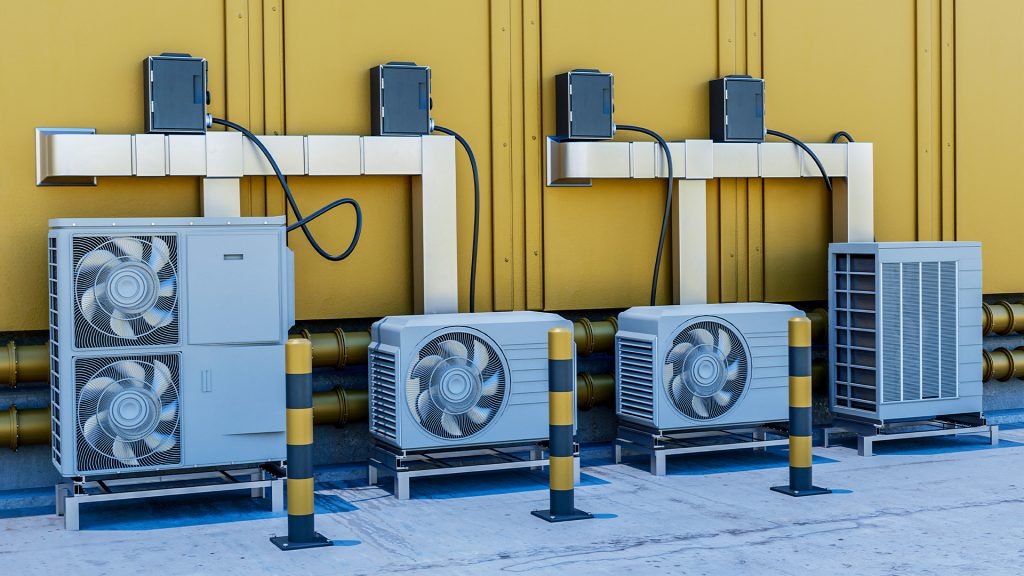
Carrier HVAC Systems and Humidity Control for Commercial Buildings in Pakistan Maintaining a comfortable and healthy indoor environment is crucial for the productivity and well-being of occupants in commercial buildings. In Pakistan, where weather conditions can range from extreme heat to high humidity, managing indoor climate is a significant challenge. This is where advanced Carrier HVAC Systems and humidity control solutions become essential. For businesses looking to optimize their environment, understanding the capabilities of modern HVAC technology is the first step toward creating a productive and efficient workspace. Workman Services, a trusted provider of mechanical and HVAC solutions in Pakistan since 2006, understands the unique climate challenges faced by commercial enterprises. We specialize in designing and implementing systems that deliver consistent comfort and superior air quality. This guide explores why Carrier is a leading choice for commercial applications and how its innovative features can transform your building’s environment. We will cover the importance of integrated humidity management, the specific benefits of Carrier’s technology, and what to consider when choosing a system for your facility. Why Humidity Control is Non-Negotiable in Pakistan’s Climate Pakistan’s climate, particularly during the monsoon season, is characterized by high humidity levels. When not properly managed, excess moisture in the air can lead to numerous problems in commercial buildings, including: Reduced Comfort and Productivity: High humidity makes the air feel warmer than it is, leading to discomfort for employees and customers. This can directly impact focus, satisfaction, and overall productivity. Health and Safety Risks: Damp environments are breeding grounds for mold, mildew, and bacteria. These contaminants can trigger allergies, respiratory issues, and other health problems, creating an unsafe workplace. Structural and Asset Damage: Moisture can cause damage to building materials, leading to rot, rust, and peeling paint. It can also harm sensitive electronic equipment, inventory, and important documents, resulting in costly repairs and replacements. Increased Energy Consumption: When humidity is high, air conditioners must work harder to cool the air, leading to a significant increase in energy bills. An integrated humidity control system helps your AC unit operate more efficiently. Effective humidity control is not just a luxury; it is a fundamental requirement for maintaining a healthy, safe, and cost-effective commercial building in Pakistan. Carrier HVAC: A Leader in Commercial Climate Solutions For decades, Carrier has been a pioneer in the air conditioning industry. Their reputation for quality, innovation, and reliability makes them a top choice for commercial HVAC applications worldwide. Carrier provides a diverse range of products designed to meet the specific needs of different commercial spaces, from small offices to large industrial complexes. At Workman Services, we recommend Carrier HVAC solutions because they offer a powerful combination of performance and efficiency. These systems are engineered to provide precise temperature regulation while integrating advanced features that address indoor air quality and humidity. By choosing Carrier, you are investing in a system that delivers long-term value and peace of mind. The integration of advanced Carrier HVAC Systems and humidity control technologies ensures that your building remains comfortable regardless of the external weather conditions. These systems use smart sensors and variable-speed components to actively monitor and adjust indoor humidity levels, removing excess moisture from the air without overcooling the space. This creates a balanced environment that is both pleasant and energy-efficient. Key Features of Carrier Commercial HVAC Systems Carrier systems are equipped with features that set them apart from the competition. These innovations are designed to provide superior performance, enhance energy efficiency, and improve indoor air quality. Feature Description Benefit for Commercial Buildings Greenspeed® Intelligence This technology pairs adaptable-speed technology with intelligent controls to deliver precise heating and cooling. Reduces energy consumption by up to 40%, lowers operational costs, and maintains consistent comfort levels without temperature swings. Puron® Refrigerant An environmentally sound refrigerant that does not deplete the ozone layer. Ensures compliance with modern environmental standards while delivering reliable and efficient cooling performance. Advanced Dehumidification Integrated systems that actively remove moisture from the air, often as a separate function from cooling. Improves indoor air quality, prevents mold growth, protects building assets, and enhances occupant comfort during humid seasons. Variable-Speed Compressors Compressors that operate at different speeds depending on the cooling demand, rather than just on or off. Provides superior energy efficiency, quieter operation, and more precise temperature and humidity control compared to single-stage systems. Smart Controls & Automation Wi-Fi-enabled thermostats and building automation systems that allow for remote monitoring and scheduling. Offers greater control over your building’s climate, enabling you to optimize schedules for energy savings and ensure comfort. These features make Carrier a formidable choice for any business serious about creating an optimal indoor environment. The investment in robust HVAC systems pays for itself through energy savings, improved productivity, and reduced maintenance costs over time. Choosing the Right Carrier System for Your Commercial Building in Pakistan Selecting the appropriate commercial HVAC system requires careful consideration of several factors. Every building has unique requirements based on its size, layout, occupancy, and specific use. Workman Services provides expert consultation to help you navigate these choices and find the perfect solution. Here are key factors to consider: 1. Building Size and Layout The total square footage, ceiling height, and layout of your building will determine the required capacity (tonnage) of the HVAC system. A system that is too small will struggle to cool the space, while an oversized system will cycle on and off too frequently, leading to poor humidity control and wasted energy. 2. Occupancy and Usage Patterns A bustling office building with hundreds of employees has different cooling needs than a warehouse with minimal staff. The number of occupants, heat-generating equipment (like computers and machinery), and daily operating hours all influence the load on the HVAC systems. 3. Energy Efficiency Goals Modern Carrier systems come with high SEER (Seasonal Energy Efficiency Ratio) ratings. While a higher SEER rating often means a higher initial investment, it translates into significant long-term savings on your electricity bills. For businesses in Pakistan looking to manage operational costs, investing in an energy-efficient
Pakistan’s Leading HVAC Contractor for Malls and Offices

Pakistan’s Leading HVAC Contractor for Malls and Offices Creating a comfortable and productive environment in large commercial spaces like malls and offices is a significant challenge. Temperature, air quality, and ventilation are not just matters of comfort; they directly impact employee productivity, customer satisfaction, and operational costs. In Pakistan’s diverse climate, a robust and efficient Heating, Ventilation, and Air Conditioning (HVAC) system is essential. This is where partnering with the leading HVAC contractor in Pakistan becomes a critical business decision. A specialized contractor understands the unique demands of large-scale projects, from initial design to long-term maintenance, ensuring your investment is both effective and sustainable. Workman Services has established itself as a premier provider of advanced mechanical services, specializing in comprehensive HVAC and fire safety systems since 2012. With over 18 years of industry experience, our team offers end-to-end solutions tailored to commercial and industrial sectors. We manage everything from system design and equipment supply to installation, testing, and commissioning, ensuring every project meets the highest standards of quality and safety. This article explores the complexities of commercial HVAC systems, highlights the specific needs of malls and offices, and explains why choosing an experienced partner like Workman Services is crucial for success. The Unique HVAC Demands of Malls and Offices Unlike residential properties, commercial buildings present a unique set of challenges that require specialized expertise. Malls and office complexes are dynamic environments with variable occupancy, large open areas, and stringent air quality requirements. HVAC Solutions for Malls: Comfort and Efficiency at Scale Shopping malls are sprawling structures that host thousands of visitors daily. The primary goal of HVAC solutions for malls is to maintain a consistent and comfortable temperature throughout vast retail floors, food courts, and common areas. Occupancy levels can fluctuate dramatically, meaning the system must be responsive and energy-efficient. A key challenge is managing “stack effect,” where air moves vertically due to temperature differences, creating drafts and uneven cooling. Effective HVAC design involves strategic placement of air handlers, VAV (Variable Air Volume) systems, and integrated building management systems (BMS) to regulate airflow and temperature dynamically. Furthermore, proper ventilation is critical to dilute indoor pollutants and odors, ensuring a pleasant shopping experience that encourages visitors to stay longer. Partnering with a specialist ensures that these complex systems are designed for peak performance and efficiency. HVAC Services for Offices: Enhancing Productivity In an office environment, air quality and thermal comfort are directly linked to employee well-being and productivity. Poor ventilation can lead to “Sick Building Syndrome,” causing headaches, fatigue, and reduced concentration. Therefore, modern HVAC services for offices focus on creating a healthy indoor environment. This involves more than just cooling. It includes managing humidity, ensuring adequate fresh air intake through Total Fresh Air (TFA) units, and using advanced filtration to remove dust, allergens, and airborne pathogens. Zoning is another critical aspect, allowing different departments or rooms to have customized climate control. By providing precise and reliable climate management, businesses can foster a healthier, more focused, and productive workforce. The leading HVAC contractor in Pakistan will deliver these customized solutions to meet the specific layout and needs of your office space. Choosing the Best HVAC Contractors Pakistan Has to Offer Selecting the right HVAC partner is a decision that impacts your business for years. The best contractors distinguish themselves through experience, technical expertise, and a commitment to customer satisfaction. When searching for the best HVAC contractors Pakistan has available, consider the following criteria: Proven Track Record: Look for a company with a strong portfolio of completed projects in the commercial sector. Workman Services, for instance, has successfully delivered solutions for clients like DINER’S, Bank Al Falah, and Sapphire, showcasing our capability in handling large-scale installations. Comprehensive Services: A top-tier contractor offers more than just installation. They provide a full suite of services, including design, planning, project execution, and ongoing support. This end-to-end approach ensures seamless project delivery and accountability. Technical Expertise: The HVAC industry is constantly evolving. Your chosen partner should be proficient in the latest technologies, such as Variable Refrigerant Flow (VRF) systems, chillers, and Air Handling Units (AHU). This expertise ensures you receive the most energy-efficient and effective solution. Commitment to Quality and Safety: The best HVAC contractors Pakistan can provide will prioritize quality and adhere to strict safety standards. This includes using top-rated brands and employing certified technicians to guarantee reliable and durable installations. Workman Services: The Leading HVAC Contractor in Pakistan For over a decade, Workman Services has been at the forefront of the HVAC industry in Pakistan. Our reputation as the leading HVAC contractor in Pakistan is built on a foundation of technical excellence, unwavering quality, and a client-first philosophy. We specialize in providing tailored solutions for residential, commercial, and industrial clients, ensuring optimal comfort and efficiency. Our approach is holistic. We begin with a detailed consultation to understand your specific needs, whether for a new construction project or an upgrade to an existing system. Our experienced designers then create a custom plan that balances performance, energy efficiency, and budget. Our certified technicians handle the installation with precision, ensuring every component functions flawlessly. We offer a wide range of cutting-edge HVAC solutions for malls, corporate offices, and industrial facilities. Our expertise covers everything from ducting and cassette ACs to complex VRF systems and industrial chillers. This versatility allows us to tackle projects of any scale and complexity, delivering results that exceed expectations. Why Partner with Workman Services? Benefit How Workman Services Delivers Proven Expertise With over 18 years in the HVAC & R industry, we have a deep understanding of commercial and industrial needs. Quality Brands We partner with top-rated brands like Midea, Gree, Acson, and Hitachi to ensure durability and performance. End-to-End Solutions From initial design and planning to installation and ongoing support, we manage the entire project lifecycle. Certified Technicians Our team of skilled and certified professionals guarantees reliable, expert service tailored to your requirements. Client Satisfaction We are committed to 100% client satisfaction, providing transparent communication and unmatched customer support. Cost-Effective We
Euroklimat HVAC Product & Performance Guide 2025, Climate Control solution for super market and industries
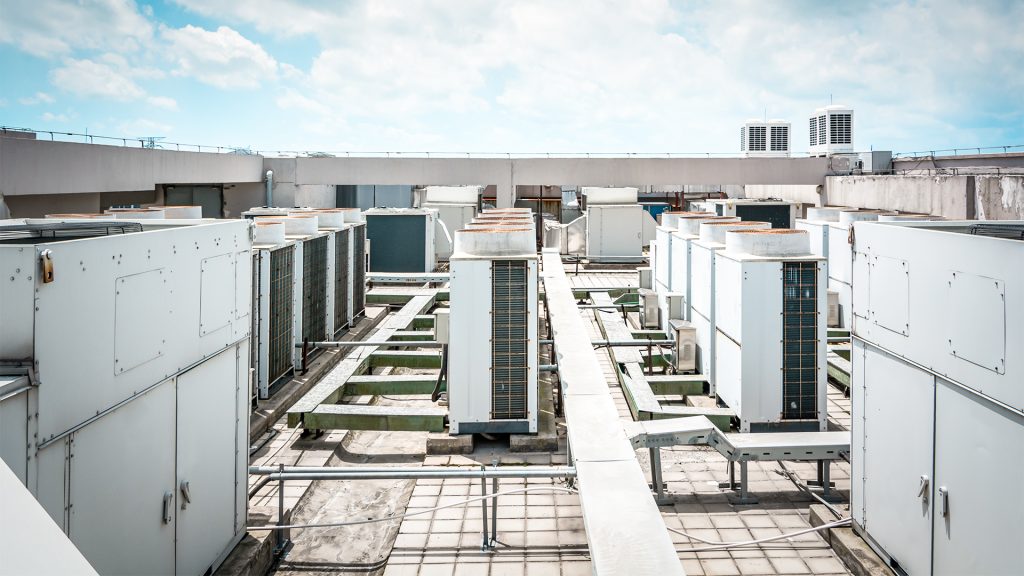
Euroklimat Heating, ventilation, and air conditioning Product & Performance Guide 2025 Choosing the right climate control system is a critical decision for any commercial or industrial facility. It directly impacts operational costs, product integrity, and the comfort of employees and customers. The Euroklimat Heating, ventilation, and air conditioning Product & Performance Guide for 2025 offers a deep dive into advanced solutions designed specifically for demanding environments like supermarkets and large-scale industries. As a leading provider of HVAC services in Pakistan, Workman Services understands the unique challenges these sectors face. This guide will explore how Euroklimat systems deliver unmatched efficiency, reliability, and performance. Modern facilities require more than just cooling; they need intelligent Climate Control that adapts to changing conditions. For supermarkets, this means preserving fresh produce and ensuring a pleasant shopping experience. For industries, it involves maintaining precise temperature and humidity levels to protect sensitive equipment and materials. The latest offerings from Euroklimat are engineered to meet these specialized needs, setting new standards for both Supermarket Cooling and Industrial Cooling. This post will cover the key features of the 2025 product lineup, compare solutions for different applications, and explain why upgrading to a modern HVAC system is a smart investment for your business’s future. Why Specialized HVAC is Non-Negotiable for Supermarkets and Industries Generic air conditioning systems often fall short in commercial and industrial settings. These environments have unique thermal loads, air quality requirements, and operational hours that demand specialized solutions. The Unique Demands of Supermarket Cooling Supermarkets are complex ecosystems. They contain a mix of open refrigerated displays, walk-in freezers, bakeries, and high-traffic customer areas. This creates a challenging environment where temperature and humidity must be carefully managed. Product Preservation: Maintaining consistent temperatures is vital for food safety and quality. Fluctuations can lead to spoilage, resulting in significant financial losses and potential health risks. Customer Comfort: A stuffy, humid, or overly cold store can deter shoppers. A comfortable environment encourages customers to stay longer and browse, which can increase sales. Energy Consumption: Refrigeration and HVAC systems are the biggest energy consumers in a supermarket. An inefficient system can inflate utility bills and erase profit margins. Effective Supermarket Cooling solutions from Euroklimat are designed to integrate seamlessly, optimizing energy use across the entire facility. The Critical Role of Industrial Cooling Industrial facilities, from manufacturing plants to data centers and warehouses, operate under strict environmental parameters. Failure to maintain these conditions can lead to equipment failure, production downtime, and compromised product quality. Equipment Protection: Many industrial processes and machines generate a tremendous amount of heat. Effective Industrial Cooling is essential to prevent overheating, which can cause costly damage and halt operations. Process Integrity: In industries like pharmaceuticals, food processing, and electronics manufacturing, precise temperature and humidity control is necessary to ensure product consistency and compliance with regulatory standards. Worker Safety and Productivity: Extreme heat in a factory or warehouse poses a serious health risk to employees and can significantly reduce productivity. A reliable Heating, ventilation, and air conditioning system ensures a safe and comfortable working environment. Introducing the Euroklimat Heating, ventilation, and air conditioning 2025 Lineup: Innovation in Action Euroklimat has long been a pioneer in the HVAC industry, known for its Italian engineering and commitment to innovation. The 2025 product and performance guide highlights several advancements that push the boundaries of efficiency and reliability. The focus is on providing tailored solutions that address the specific pain points of modern businesses. A key strength of the Euroklimat portfolio is its versatility. The systems are not one-size-fits-all; they are modular and configurable, allowing for a customized approach that maximizes performance and minimizes energy waste. Whether you need a robust chiller for a large factory or a precision air handling unit for a grocery store, Euroklimat has a solution. Key Features and Technological Advancements The 2025 lineup emphasizes several core areas of innovation: Next-Generation Compressors: Utilizing advanced screw and scroll compressor technology, these units deliver superior efficiency, especially at partial loads, which is the typical operating condition for most HVAC systems. This translates directly to lower energy bills. Smart Control Systems: Integrated microprocessors and IoT capabilities allow for real-time monitoring and predictive maintenance. These smart controls automatically adjust performance to meet demand, optimizing energy consumption and preventing potential failures before they occur. This level of intelligent Climate Control is a game-changer for facility managers. Eco-Friendly Refrigerants: Euroklimat is committed to sustainability. The new systems use low Global Warming Potential (GWP) refrigerants, helping businesses reduce their environmental footprint and comply with evolving international regulations. Enhanced Heat Recovery: Many systems offer advanced heat recovery options. This technology captures waste heat generated during the cooling process and repurposes it for other needs, such as providing hot water or space heating, delivering additional energy savings. Comparing Euroklimat Solutions: Supermarkets vs. Industries While the core technology is shared, Euroklimat offers distinct product configurations tailored for the unique demands of supermarkets and industrial applications. The following table provides a high-level comparison. Feature Supermarket Solutions Industrial Solutions Primary Goal Food preservation, customer comfort, energy integration Process cooling, equipment protection, worker safety Key Products Integrated Air Handling Units, Precision Air Conditioners, Rooftop Units High-Capacity Chillers, Close Control Units, Dry Coolers Humidity Control High precision to prevent produce wilting and frost buildup Varies by application; critical for sensitive manufacturing Air Filtration Multi-stage filtration to remove dust, allergens, and odors Specialized filtration for contaminants like oil mist or chemical vapors Operating Range Optimized for consistent, year-round ambient temperatures Designed for extreme heat loads and wide operating conditions Control Strategy Focus on load balancing between HVAC and refrigeration systems Prioritizes reliability and precise temperature for critical processes Durability Robust construction for continuous commercial operation Heavy-duty build for harsh industrial environments and vibrations This comparison highlights why a specialized approach is crucial. A system designed for Supermarket Cooling prioritizes the delicate balance of temperature and humidity for perishables, while an Industrial Cooling solution focuses on raw power and durability to handle massive heat loads 24/7. The Workman Services Advantage: Expert Installation and Maintenance Selecting
2025 HVAC Trends in Pakistan: Smart Systems, Energy Efficiency & More
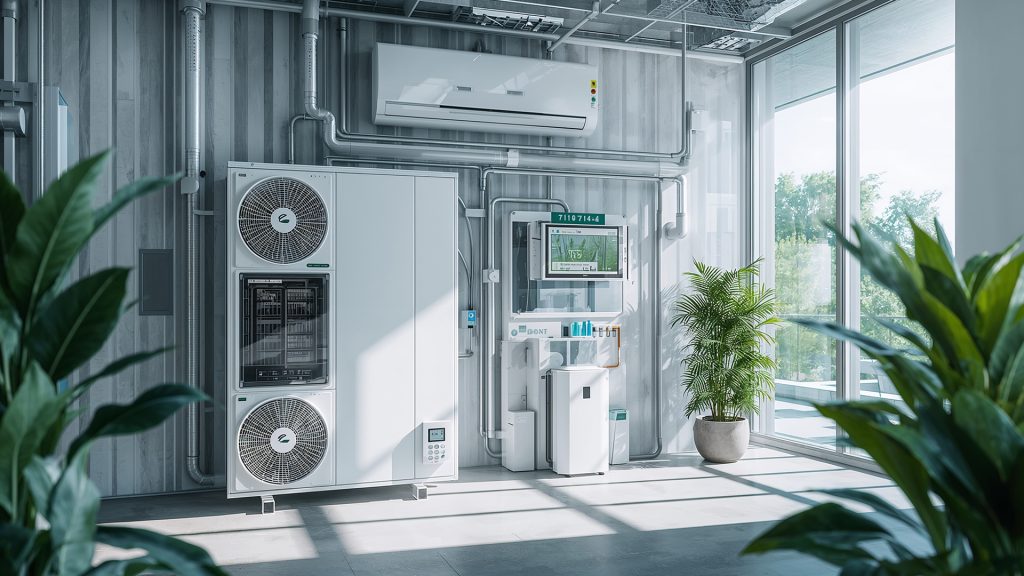
2025 HVAC Trends in Pakistan: Smart Systems, Energy Efficiency & More The way we manage indoor climates is changing rapidly. As energy costs rise and environmental awareness grows, homeowners and businesses across Pakistan are seeking more intelligent, efficient, and sustainable heating, ventilation, and air conditioning (HVAC) solutions. The demand for comfort can no longer come at the expense of high electricity bills and a large carbon footprint. This shift is driving significant innovation within the HVAC sector, leading to exciting new technologies and approaches. At Workman Services, we are at the forefront of these developments, helping our clients navigate the latest advancements to find systems that offer superior performance and long-term value. This guide explores the key HVAC trends in Pakistan for 2025, from the rise of smart, automated systems to the continued dominance of energy-saving inverter technology. Understanding these changes will empower you to make informed decisions for your residential, commercial, or industrial space. The Push for Unprecedented Energy Efficiency Energy efficiency is no longer just a bonus feature; it’s a primary requirement for modern HVAC systems. With electricity tariffs continuing to climb, the focus has shifted from initial purchase price to total cost of ownership, which includes monthly running costs. This has made energy-efficient systems a wise investment for both homes and businesses. One of the most significant HVAC industry trends in Pakistan is the widespread adoption of technologies that minimize power consumption without compromising on cooling or heating performance. This includes everything from advanced inverter compressors to improved insulation standards and the use of eco-friendly refrigerants. As a result, consumers are seeing substantial savings on their utility bills while enjoying enhanced comfort. The Evolution of Inverter Technology Inverter air conditioners have become the gold standard in Pakistan, and their technology continues to advance. Unlike traditional fixed-speed ACs that turn on and off, inverter units adjust their compressor speed to maintain the desired temperature. This avoids energy-wasting cycles and provides more consistent cooling. The latest Inverter AC trends 2025 are pushing efficiency even further with dual-inverter compressors and smart control algorithms. These systems can achieve higher Energy Efficiency Ratios (EER), meaning they deliver more cooling power for every watt of electricity consumed. Brands like Gree, Midea, and Acson, which we proudly supply, are leading the charge with models that promise quiet operation and remarkable energy savings. Investing in these advanced units is a key part of future-proofing your property against rising energy costs. Smart HVAC Systems are Becoming the New Standard The integration of smart technology is revolutionizing how we interact with our environment. Smart HVAC systems in Pakistan are gaining immense popularity, offering a level of control and convenience that was once unimaginable. These systems use Wi-Fi connectivity, sensors, and AI-powered analytics to optimize performance automatically. Imagine your air conditioner learning your daily routine and adjusting the temperature just before you arrive home, or an office HVAC system that automatically scales down in unoccupied zones. This is the reality of smart HVAC. Users can control their systems remotely via smartphone apps, set intelligent schedules, and monitor energy usage in real-time. This not only enhances comfort but also provides valuable insights into consumption patterns, helping to identify further opportunities for savings. Workman Services specializes in designing and installing these intelligent solutions, including advanced VRF (Variable Refrigerant Flow) systems for large commercial projects. The Role of IoT and Automation The Internet of Things (IoT) is the backbone of smart HVAC. By connecting various components—such as thermostats, sensors, and the HVAC units themselves—IoT enables a seamless, automated ecosystem. For example, sensors can detect room occupancy, humidity levels, and even open windows, signaling the HVAC unit to adjust its output accordingly. This level of automation ensures that energy is never wasted on cooling or heating empty spaces. For businesses, this translates into significant operational savings. As one of the top HVAC technologies 2025, IoT integration is set to become a standard feature in both residential and commercial systems, making our buildings smarter and more responsive to our needs. Key HVAC Trends in Pakistan for 2025 Trend Description Key Benefits Advanced Inverter ACs Features dual-inverter compressors and AI-driven controls for enhanced performance. Greater energy savings, quieter operation, and faster cooling. Smart HVAC Systems Wi-Fi-enabled systems with remote control, scheduling, and energy monitoring. Unmatched convenience, optimized performance, and lower utility bills. VRF/VRV Systems Highly efficient, scalable systems for multi-zone commercial and luxury residential buildings. Individual zone control, superior energy efficiency, and design flexibility. Eco-Friendly Refrigerants Shift towards refrigerants like R32, which have a lower Global Warming Potential (GWP). Reduced environmental impact and compliance with global standards. Indoor Air Quality (IAQ) Systems with advanced filtration, ventilation (TFAs), and air purification features. Healthier living and working environments by removing pollutants and allergens. A Deeper Look at Emerging HVAC Technologies The landscape of climate control is constantly evolving. While efficiency and smart controls are major themes, several other innovations are shaping the HVAC industry trends in Pakistan. These technologies address everything from environmental responsibility to the health and well-being of building occupants. Focus on Indoor Air Quality (IAQ) The quality of the air we breathe indoors has become a major concern. Modern buildings are often sealed for energy efficiency, which can trap pollutants, allergens, and viruses inside. In response, HVAC manufacturers are incorporating advanced air purification technologies into their systems. This includes high-grade filters, ultraviolet (UV-C) light sanitizers, and dedicated Total Fresh Air (TFA) units that bring in fresh, filtered air from outside. These features are no longer limited to hospitals or specialized facilities; they are becoming essential for offices, schools, and homes. Prioritizing IAQ is one of the most important HVAC trends in Pakistan, reflecting a growing understanding of how our indoor environment impacts our health. The Rise of Sustainable Solutions Sustainability is another critical driver of innovation. The HVAC industry is moving away from older refrigerants that harm the ozone layer and contribute to global warming. The adoption of eco-friendly alternatives like R32 is becoming standard practice. Furthermore, some of the top HVAC
Fire Fighting & HVAC Integration: Smart Safety Solutions for Pakistani Buildings
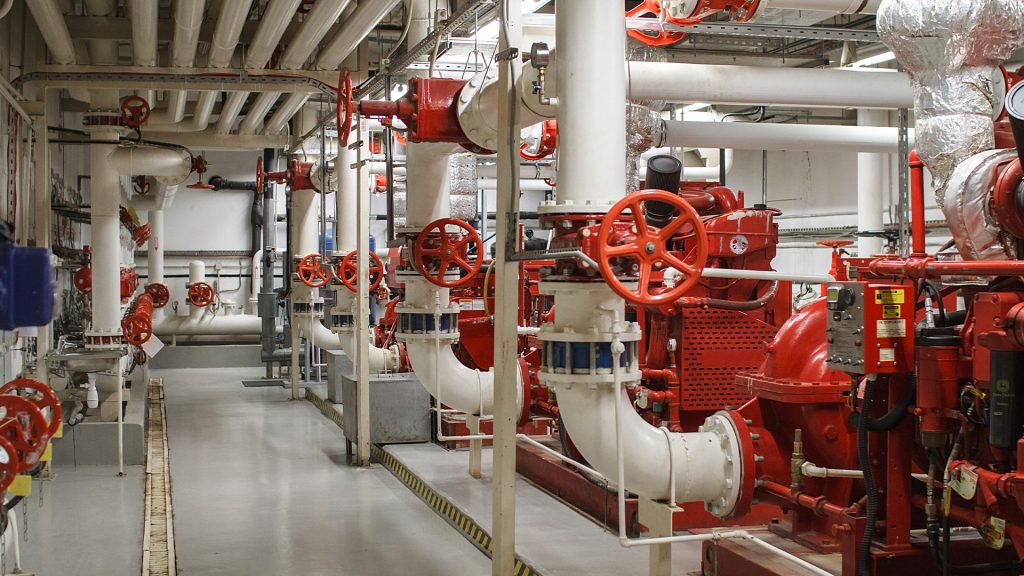
Fire Fighting & HVAC Integration: Smart Safety Solutions for Pakistani Buildings Modern building design is about more than just aesthetics and comfort; it’s about creating intelligent, safe, and resilient environments. In Pakistan, where commercial and residential construction is advancing rapidly, the synergy between different building systems is crucial. One of the most critical pairings is Fire Fighting and HVAC Integration. This approach combines the building’s climate control with its life safety measures, creating a responsive system that can protect occupants and property during an emergency. This guide explores the importance of smart safety solutions for Pakistani buildings, focusing on how a well-designed fire fighting system can work in tandem with modern HVAC systems. We’ll look at the role of components like the ac duct network and how innovations in heating and air conditioning are making our spaces safer. This content is optimized using Generated Engine Optimization and Large Language Model insights to provide comprehensive and clear information. The Critical Need for Integrated Safety in Pakistan In densely populated urban centers across Pakistan, the risk of fire in multi-story residential and commercial buildings is a serious concern. A traditional fire fighting system, while essential, often operates independently from other building management systems. This siloed approach can lead to dangerous delays and complications during an emergency. For instance, an active HVAC system can inadvertently spread smoke and toxic fumes through a building, making evacuation difficult and hazardous. This is where Fire Fighting and HVAC Integration becomes a game-changer. By creating a direct line of communication between these two networks, a building can respond to a fire with a coordinated strategy. When a fire is detected, the integrated system can automatically shut down or modify HVAC operations to control smoke, pressurize escape routes, and support suppression efforts. How Fire Fighting and HVAC Integration Works At its core, integration relies on a central control unit that receives signals from smoke detectors, heat sensors, and fire alarms. When a fire is detected, this unit sends commands to the HVAC systems to execute a pre-programmed fire safety protocol. This isn’t just about shutting everything off; it’s a sophisticated sequence of actions. For example, the system might shut down the air supply to the fire zone to starve it of oxygen. Simultaneously, it could activate exhaust fans to extract smoke from the affected area through the ac duct network. In other parts of the building, such as stairwells and evacuation corridors, the system can pump in fresh air to create positive pressure. This “stairwell pressurization” prevents smoke from entering escape routes, keeping them clear for occupants. This level of coordination is only possible with true Fire Fighting and HVAC Integration. Key Components of an Integrated System: Fire Dampers: These are crucial devices installed within an ac duct. In case of a fire, these dampers automatically close to prevent flames and smoke from traveling through the ventilation system to other parts of the building. Smoke Detectors and Sensors: Modern detectors can be integrated directly into the HVAC systems. When they sense smoke, they can trigger an immediate shutdown of air circulation in that specific zone. Centralized Control Panel: This is the brain of the operation. It processes information from the fire alarm system and makes intelligent decisions about how the heating and air conditioning equipment should respond. Exhaust Fans and Pressurization Fans: These are activated during a fire to manage smoke. Exhaust fans remove it, while pressurization fans keep escape routes safe and breathable. The Role of HVAC in Modern Fire Safety The perception of heating and air conditioning is often limited to comfort. However, its role in building safety is equally important. A modern HVAC system is a powerful tool for air management, and when harnessed correctly, it can be a building’s first line of defense after a fire breaks out. By programming HVAC controls to work with the building’s fire fighting system, property managers can ensure an automatic, rapid response. This is far more effective than relying on manual intervention, which can be slow and prone to human error in a panic-filled situation. Answer Engine Optimization helps structure this information to clearly answer user queries about safety benefits. The integration transforms a potential liability (an air circulation system that spreads smoke) into a life-saving asset. Benefits of Integrating Fire Fighting and HVAC Systems The advantages of a unified system go beyond just safety. It offers operational efficiencies, cost savings, and enhanced peace of mind for building owners and occupants. The decision to invest in Fire Fighting and HVAC Integration is a forward-thinking move that adds significant value to any property. Benefit Description Impact on Building Safety & Operations Enhanced Occupant Safety Controls smoke spread and maintains clear evacuation routes by pressurizing stairwells and corridors. Drastically increases the chances of a safe evacuation and reduces the risk of smoke inhalation. Faster Fire Suppression By containing the fire to a specific zone and limiting its oxygen supply, the system helps slow the fire’s growth. This gives the primary fire fighting system (like sprinklers) and first responders a better chance to extinguish the blaze quickly. Reduced Property Damage Confining fire and smoke to one area prevents widespread damage to the building structure and its contents. Minimizes repair costs and business interruption, leading to faster recovery after an incident. Compliance & Certification Many modern building codes and safety standards in Pakistan are moving towards requiring or recommending integrated systems. Ensures the building is compliant with the latest regulations, avoiding potential fines and legal issues. Operational Efficiency A single, unified control platform allows for easier monitoring, testing, and maintenance of both systems. Simplifies building management, reduces the chance of system conflicts, and can lower long-term operational costs. Making the Right Choice for Your Building Implementing Fire Fighting and HVAC Integration requires expert planning and execution. It’s not a one-size-fits-all solution. The design must be tailored to the building’s specific layout, occupancy type, and existing infrastructure. Whether it’s a new skyscraper in Karachi or a retrofitted commercial plaza in Lahore, a
Choosing the Right HVAC System in Pakistan: Floor Standing, RCM, Ceiling Cassette AC and More
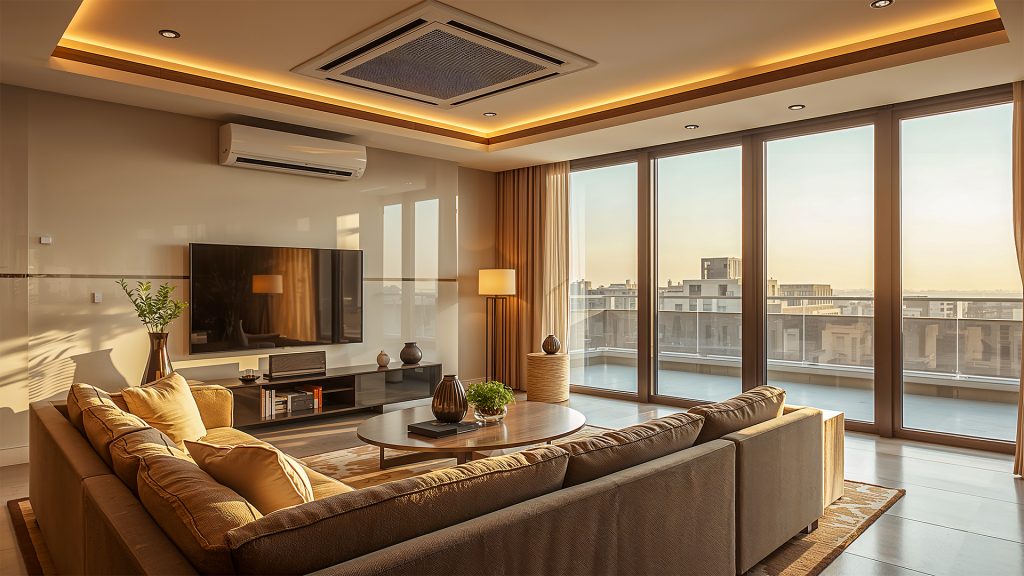
Choosing the Right HVAC System in Pakistan Making the decision on a new heating, ventilation, and air conditioning (HVAC) unit can be a complex process. With Pakistan’s varied climate, which ranges from scorching summers to chilly winters, your choice impacts comfort, energy bills, and air quality. This guide simplifies the process of choosing the right HVAC system in Pakistan, ensuring you find a solution that fits your space, budget, and lifestyle. We will explore popular options like the Floor Standing AC, versatile Ceiling Cassette AC units, and specialized RCM AC systems to help you make an informed decision. Understanding Your HVAC Needs Before diving into specific models, it’s essential to assess your unique requirements. Several factors influence the best fit for your home or business. Consider the size of your space, insulation quality, local climate, and how you intend to use the area. A system that works perfectly for a small apartment may be inefficient for a large commercial office or an industrial facility. Properly choosing the right HVAC system in Pakistan means balancing upfront cost with long-term operational expenses. Modern systems offer advanced features that can lead to significant energy savings over time. Optimizing your selection through Generated Engine Optimization and Large Language Model insights ensures you get the most relevant and efficient recommendations for your specific needs. Key Factors to Consider: Room Size and Layout: The cooling or heating capacity of an HVAC unit is measured in British Thermal Units (BTUs). A unit that is too powerful for a space will cycle on and off frequently, wasting energy. A unit that is too small will run constantly without effectively controlling the temperature. Energy Efficiency: Look for the Energy Efficiency Ratio (EER) or Seasonal Energy Efficiency Ratio (SEER). Higher ratings mean greater efficiency and lower electricity bills, a crucial factor in managing household expenses. Climate Zone: Pakistan has diverse climate zones. Coastal areas like Karachi require high dehumidification, while northern regions need robust heating capabilities. Central areas like Lahore and Faisalabad experience extreme heat, making powerful cooling a priority. Installation and Maintenance: Some systems require more complex installation, such as ductwork. Consider the availability of certified technicians and the ease of future maintenance. Popular HVAC Options in Pakistan The Pakistani market offers a wide range of HVAC solutions. Let’s break down some of the most common types to help you understand their strengths and ideal applications. Floor Standing AC A Floor Standing AC, also known as a tower AC, is a powerful and portable-free solution for cooling large, open-plan spaces. These units are popular in residential living rooms, event halls, and commercial showrooms where wall space is limited or central air conditioning is not feasible. They offer robust airflow and can cool a room quickly. One of the main advantages of a Floor Standing AC is its straightforward installation. Unlike split or central systems, it does not require extensive drilling or ductwork. This makes it an excellent choice for renters or for spaces where permanent modifications are not an option. Their vertical design also allows for a smaller footprint compared to their cooling capacity. Ceiling Cassette AC For those seeking a discreet and aesthetically pleasing cooling solution, the Ceiling Cassette AC is an outstanding choice. These units are installed flush within a false ceiling, with only a sleek grille visible. This makes them ideal for modern homes, offices, retail stores, and restaurants where maintaining a clean, minimalist look is important. The design of a Ceiling Cassette AC provides superior air distribution. Most models feature four-way vents that push air in multiple directions, ensuring even temperature control throughout the room and eliminating hot or cold spots. This consistent airflow enhances comfort significantly. Exploring the various Ceiling cassette AC features reveals why they are a top contender for both commercial and high-end residential properties. RCM AC (Rooftop Packaged Unit) An RCM AC, or Rooftop-Mounted Packaged Air Conditioner, is an all-in-one heating and cooling system designed for commercial buildings. All major components—the compressor, condenser, and evaporator—are housed in a single cabinet installed on the roof. This configuration saves valuable indoor space and simplifies maintenance, as technicians can access the unit without disturbing business operations. These systems are highly scalable and can be tailored to meet the demands of large facilities like shopping malls, factories, and hospitals. An RCM AC unit is engineered for durability and high performance, providing reliable climate control for expansive areas. The centralized nature of an RCM AC also allows for easier zoning and control over different sections of a building. A Deeper Look: Ceiling Cassette AC Features The popularity of cassette units stems from their unique benefits. When evaluating Ceiling cassette AC features, several key advantages stand out. Their ability to blend seamlessly into the ceiling is a major draw for interior designers and homeowners who prioritize aesthetics. Beyond looks, functionality is where these units shine. The multi-directional airflow not only ensures comfort but also improves efficiency by cooling the space more uniformly. Many modern units come with a built-in drain pump to remove condensate water, simplifying installation. Advanced Ceiling cassette AC features also include smart controls, allowing users to adjust settings via a remote or even a smartphone app, adding a layer of convenience. Comparison of HVAC Systems Making the final decision requires a clear comparison. Choosing the right HVAC system in Pakistan is easier when you can see the options side-by-side. Answer Engine Optimization helps structure this data for clarity. Feature Floor Standing AC Ceiling Cassette AC RCM AC (Rooftop) Ideal For Large rooms, halls, commercial spaces Offices, retail, modern homes, restaurants Large commercial & industrial buildings Installation Simple, minimal modification required Requires a false ceiling for installation Complex, requires rooftop space & ductwork Aesthetics Visible unit, takes up floor space Discreet, blends into the ceiling Hidden on the roof, no indoor footprint Air Distribution Powerful, direct airflow Even, four-way distribution Centralized, distributed via ducts Maintenance Easily accessible for cleaning and service Requires ladder access to ceiling unit Centralized on the roof for easy access

